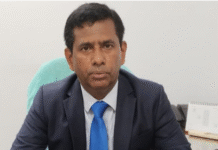 Water is something which is found in plenty in Bangladesh, but the days are not far away when finding fresh water will mean something very precious due to the destruction of surface water sources, unplanned groundwater extraction and increasing salinity in coastal region caused by climate change.
Water is something which is found in plenty in Bangladesh, but the days are not far away when finding fresh water will mean something very precious due to the destruction of surface water sources, unplanned groundwater extraction and increasing salinity in coastal region caused by climate change.
According to water experts, the country’s rivers are dying gradually for lack of adequate water flow, and the unplanned urbanisation, industrialisation and rampant use of pesticide in agriculture are contributing to the surface water destruction. And above all there is its wastage both in agriculture and households, they said.
“The surface water is being polluted due to unchecked disposal of industrial wastes into rivers and water bodies. Water is limited in the planet, but its demand is increasing day by day with the growing global population. Where the additional water will come from,” Sardar M Shah-Newaz, director of Flood Management Division of the Institute of the Water Modelling (IWM), told UNB.
As most rivers are originated from outside Bangladesh (Nepal, India and China), the flow of rivers depends on the upstream countries, he said adding that the cross-boundary river issue will be a big challenge in the future to maintain the smooth water flow in the country’s rivers.
Groundwater Extraction
The groundwater is being extracted across the country to meet the growing demand for water in urban areas for household use and rural areas for agriculture. The groundwater level is depleting day by day as the recharge rate is falling due to dying rivers.
“Groundwater level is rapidly declining in capital Dhaka and northern region due to its over-extraction,” Shah-Newaz said.
As rainwater cannot help recharge the groundwater due to concrete roads and structures in the capital, groundwater level is declining by 3-5 meters a year, said Imamur Rahman, the programme manager of WaterAid.
“About 85 percent of extracted groundwater is used in agriculture. The recharge of groundwater is declining as surface water bodies are shrinking day by day in the country,” he said.
According to a recent study, groundwater use for irrigation has become a matter of growing concern in northern Bangladesh.
Principal investigator Dr Nepal Chandra Dey, co-investigators Dr Sujit Kumar Bala, Dr AKM Saiful Islam and Dr Abdur Rashid of BRAC jointly conducted the study, titled ‘Sustainability of Groundwater Use for Irrigation in the northwestern Bangladesh’, covering five districts — Rajshahi, Dinajpur, Pabna, Rangpur and Bogra.
The study identified the key impediments to sustainability of groundwater use for irrigation as overexploitation of groundwater than the recharge of aquifer, installation of number of tube well, declining trend of river water level and discharge, declining trend of wetland areas, less rainfall during dry period, increasing irrigation cost and defects in the present irrigation management practice.
Destruction of Water Bodies
The water experts said although Bangladesh is a land of rivers, the surface water sources, including wetlands and rivers, are at stake as industrial pollution are destroying surface water sources and many common rivers are dying for lack of water flow.
The four rivers — Buriganga, Turag, Balu and Shitlakhya – that surround Dhaka city are being polluted as people are throwing untreated wastes directly into the rivers, they said.
“The highly contaminated water of the Buriganga River is untreatable… Buriganga is the only river in the world where no organism can survive due to over-pollution,” Shah-Newaz said.
Imamur Rahman said as water sources are being polluted across the country, a severe safe drinking water crisis will emerge in the future. “You will find water, but not safe water for drinking.”
Salinity Intrusion
Global warming is contributing to sea-level rise, which triggering salinity intrusion into the coastal region. The recurrent trend of cyclone, storm surge and flood are accelerating salinity in pond and water bodies of coastal belt, which is the only source of drinking water.
“As the sea-lever is rising due to global warming, salinity intrusion is going fast in coastal area destroying water bodies (pond and wetland) and agricultural land,” the WaterAid programme manager said.
Although water is everywhere in the coastal areas, people cannot drink water due to salinity. Most of the people in the region have to drink almost saline water to save their lives. Ponds and rainwater harvesting in households are now the major sources of drinking water in the areas.
Due to the sea-level rise, the salinity is not only affecting the surface water sources, but also affecting the aquifer layer, which will trigger an acute water crisis in the future in the coastal region, Shah-Newaz said.
Strong Control
The water experts said the government should form a regulatory body to check rampant use of underground water and water pollution to address the emerging water challenge.
Imamur Rahman said if the water use cannot be regulated through formation of a regulatory body, the nation will suffer more in the future.
“It’s time to take steps to protect the country’s water and water resources. Otherwise, we’ll have to pay more in the coming years,” he said.
About bottled water, Imamur said water vendors are setting up tube-wells to extract groundwater and doing business. “The government has no control in this regard,” he added.
They are doing a brisk business as people cannot depend on piped water, he said stressing the need for taking steps to improve the management of water resources.
Source: UNB Connect









